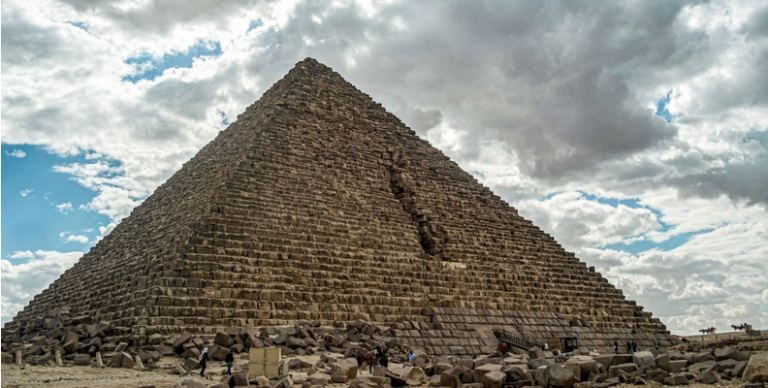Archaeologists in Egypt have employed remote sensing techniques to uncover a mysterious L-shaped structure buried beneath the western cemetery of Giza. This cemetery houses the burials of royal family members and high-ranking officials, many of which are marked by above-ground rectangular structures known as “mastabas.” However, a section in the middle of the cemetery lacks such structures. To investigate this area, scientists utilized electrical resistivity tomography (ERT) and ground-penetrating radar (GPR), detecting anomalies underground, potentially revealing significant archaeological finds.
In their study published on May 5 in the journal Archaeological Prospection, the team reported discovering an anomaly approximately 6.5 feet (2 meters) below the surface. This anomaly appears to be an L-shaped structure measuring at least 33 feet (10 meters) in length. According to the team’s analysis, the structure seems to have been filled with sand, indicating it was backfilled after construction. Additionally, the deeper structure, characterized as a “highly resistive anomaly” in the readings, could potentially consist of a mix of sand and gravel or even an air void.
Bob Katsionis: Shreds ‘Mon Amour’ from Eurovision – Slimane’s Reaction (videos-photo)
Excavations are currently underway to determine the nature of the newly discovered L-shaped structure, as stated by study first author Motoyuki Sato from Tohoku University. Sato expressed confidence that the structure is not natural due to its precise shape. Peter Der Manuelian, an Egyptology professor at Harvard University not involved in the study, finds the discovery intriguing, noting the lack of superstructures in the area. While L-shaped offering chapels exist at Giza, they are typically aboveground. The anomaly warrants further exploration to fully understand its significance. The remote sensing work was conducted between 2021 and 2023 by a collaborative team from Higashi Nippon International University, Tohoku University, and Egypt’s National Research Institute of Astronomy and Geophysics.
Ask me anything
Explore related questions





